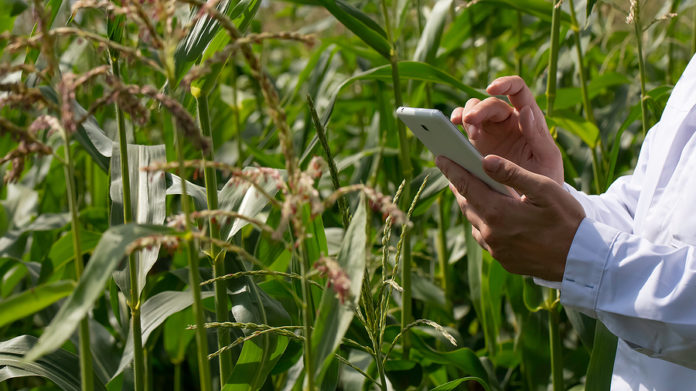
By Rod Coogan and Ellena Cartlidge at PA Consulting
As the global human population continues to grow and climate change leads to weather events that impact crop yields, resources are constantly being stretched and scarcity is a pressing concern. These challenges are prompting the need for increased innovation in crop management to sustain worldwide populations while minimizing environmental harm. To meet these needs, record amounts of capital are being invested into agriculture technologies (agritech) set to revolutionize how we grow crops. However, with many of these technologies being new to market, it can be difficult for farmers to know which investments will have the greatest impact and deliver sustainable, efficient crop yields.
New technologies are enabling farmers to make data-informed, proactive decisions. Big data is the crux of innovation in agritech, allowing users to monitor and predict what changes will be necessary in light of changing environmental factors. Currently, there are numerous technologies being developed to help growers maximize their crop yields through soil management, weather prediction, and plant growth requirements while limiting waste. Below we dive into three technologies that can help.
Geographic Information Systems to support soil management
Geographic Information Systems (GIS) analyze soil data using sensors to map fields and indicate characteristics such as soil type, pH, nutrient availability, soil moisture content and more. These data points are all crucial in ensuring the health and productivity of any crop, and with the right technology can be used to optimize crop output. Historical data from GIS can be used to map out where specific crops will thrive and point to whether site specific soil amendments are required. In addition to improving crop health, GIS is also effective in crop yield estimation, which helps the industry better manage supply and demand. Optimal soil conditions are a key factor in supporting a strong harvest.
CropScape and VegScape are platforms available through the US Department of Agriculture’s National Agriculture Statistics Service that allow farmers to use their land data without implementing GIS themselves. This accessibility allows farmers at all levels to benefit from the advanced technology.
Precision farming using sensors to pin-point crop requirements
Precision farming uses data from remote sensors, satellite guidance, and position systems that enables farmers to calibrate input rates for fertilizer, water, and pesticides depending on various factors, including soil moisture, weather patterns, and other hyper-local considerations. This allows for the precise application of fertilizer, irrigation, pest management, and water, precisely where they are most needed. One study found that through precision farming techniques, crop production could be increased by 4% while reducing herbicide and pesticide use by 9%. Further, water use can be reduced by 4%, and fossil fuels can be reduced by 6%. In this way, precision farming not only improves crop production, but also improves sustainability in agriculture by reducing waste and greenhouse gas emissions.
In practice, the Atfarm platform developed by Yara creates variable rate applications maps using satellite imagery to support farmers by allowing them to monitor crop development over time. ONDO is another agritech leader that helps reduce water usage by up to 85% with smart irrigation management. They provide farmers with monitoring systems that obtain data from sensors installed within the farm to monitor soil quality and nutrition and adjust irrigation requirements accordingly.
Predictive weather analytics to inform proactive management decisions
Predictive weather analytics uses weather data collated over years across specific regions to determine the optimal times to plant, irrigate, fertilize, and harvest to achieve the highest outputs based on environmental conditions. This can help farmers predict their yields based on weather patterns and mitigate price fluctuation in the market, and also enable proactive management decisions such as the best time to harvest based on weather conditions. As climate change impacts frost dates and growing seasons, this technology is likely to become even more useful long-term. Tracking events such as drought and flooding over time will also help farmers predict and prepare for such events in the future. Weather variations have been found to be the root cause of more than 50% of the variability in wheat yields in Australia, Canada, Spain, Hungary, and Romania, predicting and preparing for these events allows farmers to adjust their strategies accordingly.
Setting up agritech systems for success
The technologies listed are just a handful of the emerging innovations already reshaping agriculture. As farmers, government entities, and corporations who rely on farmers for raw materials for their products decide which options will benefit their operations and communities the most, they must weigh all their options. Higher crop yields, reducing waste, responding to and proactively managing weather events and improving soil quality for the next growing season are potential goals.
Once the right types and scale of agritech are selected, optimizing that technology by ensuring sufficient data is being collected and analyzed is vital. Farmers need to know exactly where sensors should be placed, how many are needed for maximum benefit, and how to collect and interpret resulting data. There are so many factors that go into each growing season, and different technologies can help monitor and predict each one. Making the most of publicly available agritech tools, like CropScape and VegScape, will also help farmers modernize their operations. As farmers weigh the pros and cons of various technologies, being able to use public platforms as a reference point will greatly enhance their decision-making.
 Dr. Rod Coogan is an agri-food expert at PA Consulting.
Dr. Rod Coogan is an agri-food expert at PA Consulting.
 Dr. Ellena Cartlidge is an emerging technologies strategy expert at PA Consulting.
Dr. Ellena Cartlidge is an emerging technologies strategy expert at PA Consulting.








![[eBook] Tales of Triumph from the Factory Floor, Vol. 2](https://foodindustryexecutive.com/wp-content/uploads/2025/04/FOTFL_Tales_of_Triumph_Vol_2_Cover-1-324x160.jpg)